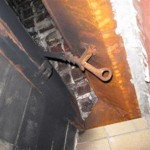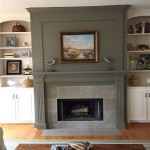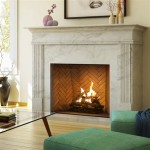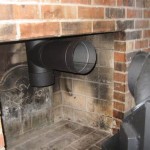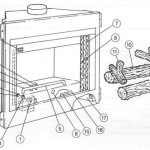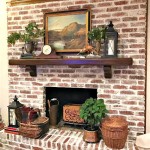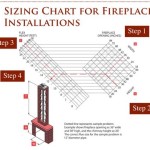Here is an article focusing on modern tile fireplaces, written according to the given instructions:
Modern Tile Fireplaces: A Fusion of Function and Design
Fireplaces have long been a central element in home design, providing warmth and serving as a focal point for gathering. While traditional fireplaces often evoke images of brick or stone, modern tile fireplaces offer a contemporary alternative, blending functionality with aesthetic versatility. The use of tile in fireplace design offers a wide range of possibilities in terms of color, texture, and pattern, allowing homeowners to create a truly unique and personalized space.
The integration of tile into modern fireplace design represents a significant shift from purely functional heating appliances to decorative elements that contribute to the overall ambiance of a room. This transition is driven by advances in tile manufacturing, enabling the creation of tiles in various shapes, sizes, and materials. From large-format porcelain slabs to intricate mosaic patterns, modern tile fireplaces cater to diverse design preferences and architectural styles.
The selection of the appropriate tile is paramount in creating a successful modern tile fireplace. Factors such as the tile's heat resistance, durability, and aesthetic compatibility with the surrounding environment must be carefully considered. The installation process also requires specialized knowledge and expertise to ensure a safe and visually appealing outcome. This article will explore the key aspects of modern tile fireplaces, including material selection, design considerations, and installation techniques.
Material Selection: Balancing Aesthetics and Performance
The choice of tile material is critical for a modern tile fireplace, as it dictates both its aesthetic appearance and its ability to withstand the high temperatures generated by the fire. While various tile materials can be used, certain types are more suitable for fireplace applications than others. The primary considerations when selecting tile materials are heat resistance, durability, moisture resistance, and ease of maintenance.
Porcelain tile is a popular choice for modern tile fireplaces due to its exceptional durability and heat resistance. Porcelain is created through a high-temperature firing process, resulting in a dense and non-porous material that can withstand extreme temperatures without cracking or warping. Additionally, porcelain tile is resistant to moisture and stains, making it suitable for use in areas that may be exposed to spills or condensation.
Ceramic tile is another option, although it is generally less durable and heat-resistant than porcelain. While ceramic tile can be used for fireplace surrounds, it is typically not recommended for areas directly exposed to the flames or the hottest parts of the firebox. Ceramic tile is available in a wide range of colors, patterns, and textures, offering greater design flexibility.
Natural stone tiles, such as granite, marble, and slate, can also be used for modern tile fireplaces. Natural stone offers a unique and luxurious aesthetic, but its suitability depends on the specific type of stone and its inherent properties. Granite is known for its durability and heat resistance and is a good choice for fireplace surrounds. Marble, while visually appealing, is more porous and susceptible to staining, requiring sealing and regular maintenance. Slate offers a rustic and textured look but may be prone to chipping or flaking.
Glass tile is an increasingly popular option for modern tile fireplaces, adding a touch of elegance and sophistication. Glass tile is available in various colors, shapes, and finishes, allowing for creative and eye-catching designs. However, not all glass tile is suitable for fireplace applications. It is crucial to select tempered or heat-resistant glass tile specifically designed for high-temperature environments.
When selecting tile for a fireplace, it is essential to consult with a tile specialist or fireplace professional to ensure that the chosen material is appropriate for the intended application and meets all safety requirements. The tile's coefficient of thermal expansion should also be considered to prevent cracking or detachment due to temperature fluctuations.
Design Considerations: Harmonizing with the Architectural Style
The design of a modern tile fireplace should complement the overall architectural style of the home and the existing interior décor. The tile's color, pattern, size, and texture can significantly impact the fireplace's visual appeal and its integration into the surrounding space. Careful consideration should be given to these design elements to achieve a cohesive and harmonious look.
The color of the tile should be chosen to coordinate with the room's color palette, furniture, and accessories. Neutral colors, such as white, gray, and beige, are versatile and can be easily incorporated into various design styles. Bold colors and patterns can be used to create a statement piece, but they should be carefully balanced to avoid overwhelming the space.
The tile's pattern can add visual interest and depth to the fireplace surround. Geometric patterns, such as squares, rectangles, and triangles, are popular in modern designs. Mosaic patterns, created with small tiles of varying colors and shapes, can create intricate and artistic designs. Large-format tiles minimize grout lines and create a clean and seamless look.
The size of the tile should be proportional to the fireplace's dimensions and the size of the room. Large tiles can make a small fireplace appear larger, while small tiles can add detail and texture to a larger fireplace. The tile's shape can also contribute to the overall design. Rectangular tiles can be arranged in various patterns, such as subway tile or herringbone, to create different visual effects.
The texture of the tile can add tactile interest and depth to the fireplace surround. Textured tiles can mimic the look of natural stone, wood, or other materials. Smooth tiles offer a sleek and modern look. The texture of the tile should be consistent with the overall design style of the room.
In addition to the tile itself, the design of the fireplace mantel and hearth should also be considered. The mantel can be made of wood, stone, or other materials and can be used to display decorative items. The hearth is the area in front of the fireplace and should be made of a non-combustible material, such as tile, stone, or concrete. The size and shape of the hearth should be proportional to the fireplace and the room.
Installation Techniques: Ensuring Safety and Longevity
The installation of a modern tile fireplace requires specialized knowledge and expertise to ensure a safe and long-lasting result. The installation process involves preparing the substrate, applying the mortar, setting the tiles, and grouting the joints. Each step must be performed carefully and accurately to prevent problems such as cracking, detachment, or water damage.
The substrate, or the surface to which the tiles are applied, must be clean, dry, and level. Loose or damaged material should be removed, and the surface should be repaired as needed. A cement backer board is typically used as a substrate for tile fireplaces, as it is fire-resistant and provides a stable and durable base for the tiles.
The mortar is used to bond the tiles to the substrate. The type of mortar used should be specifically designed for tile fireplaces and should be heat-resistant. The mortar should be mixed according to the manufacturer's instructions and applied evenly to the back of each tile.
The tiles should be set carefully and accurately, ensuring that they are level and aligned. Spacers should be used to maintain consistent grout lines. The tiles should be pressed firmly into the mortar to ensure a strong bond. Excess mortar should be removed from the tile surface.
After the mortar has cured, the grout can be applied. The grout fills the spaces between the tiles and provides a watertight seal. The type of grout used should be appropriate for the type of tile and the width of the grout lines. The grout should be applied evenly and allowed to dry according to the manufacturer's instructions.
Once the grout has dried, it should be sealed to protect it from stains and moisture. The sealant should be applied according to the manufacturer's instructions. Regular maintenance, such as cleaning the tile and resealing the grout, can help to prolong the life of the fireplace.
Installing a tile fireplace often requires permits to ensure it meets local building codes. These codes are in place for safety and to ensure the fireplace is built correctly and efficiently. Homeowners should research their local codes or consult a professional who is familiar with them.
In conclusion, modern tile fireplaces offer a versatile and stylish way to add warmth and beauty to any home. By carefully considering the material selection, design considerations, and installation techniques, homeowners can create a fireplace that is both functional and aesthetically pleasing. Proper construction and installation by a professional are key to ensuring the hearth adds to the home's appeal and value for years to come.

Fireplace Feature Wall Ideas Queen City Stone Tile

Hottest Fireplace Trend Tile Flooring America
These Tiled Fireplaces Are Swoon Worthy Tileist By Tilebar

Fireplace Tile Design Ideas For 2024 The

Fireplace Tiles Classique Floors Tile Portland Or

Red Hot Fireplace Ideas

53 Best Fireplace Tile Ideas And Designs With S For 2024 Surround Surrounds Home

10 Fireplace Tile Ideas

Tile Around Fireplace Ideas Design Contemporary Designs

Farmhouse Fireplace Tile Ideas 11 Ways To Enhance A Fiery Focal Point Atlas Ceramics


